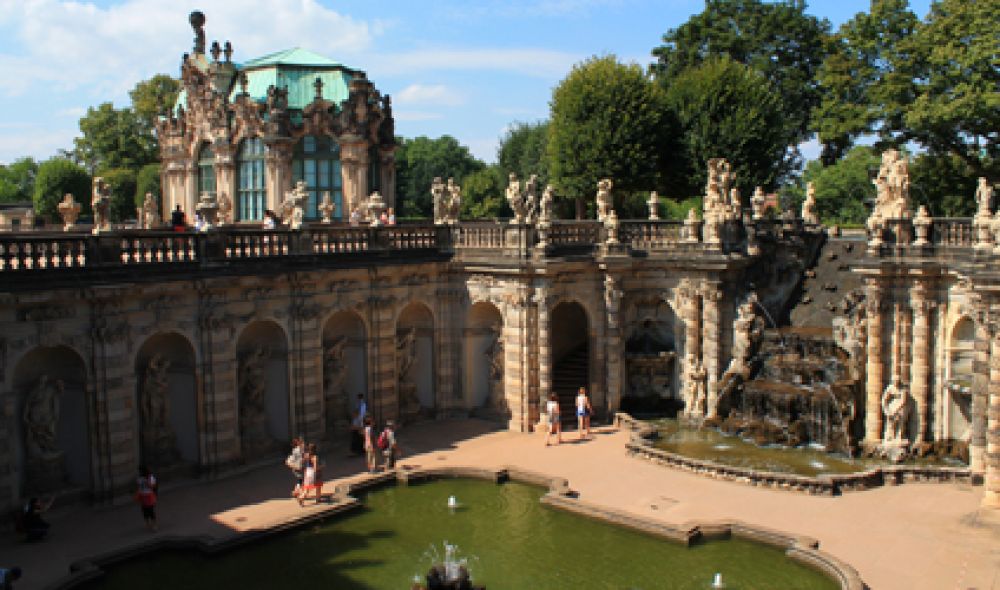

The Zwinger Palace in Dresden is one of Germany's most renowned cultural landmarks. Its history as a tourist destination has its roots in the early 18th century. Constructed in the Baroque style under the orders of Augustus the Strong, Elector of Saxony and King of Poland, the palace served as a symbol of his power and a venue for court festivities. The name 'Zwinger' comes from the German word for the space between two fortifications, referencing the palace's original location between Dresden's inner and outer fortification walls.
Although the Zwinger was built for courtly purposes, its beauty and architectural significance quickly attracted visitors. With the advent of the Grand Tour in the 18th century, a trip through Europe's cultural highlights was considered essential for the education of wealthy young Europeans, and the Zwinger became a must-see destination on this itinerary.
Over time, the Zwinger Palace evolved from a private royal estate to a public museum complex. After surviving numerous challenges, including severe damage during World War II, the Zwinger was meticulously restored to its former glory. The restoration process itself attracted attention and, following its completion, the palace resumed its status as a premier tourist attraction.
In recent years, the tourism trend at Zwinger Palace has leaned towards immersive experiences. Visitors are not only interested in the history and architecture but also in engaging with the past in a more interactive way through multimedia guides and augmented reality. Additionally, the emphasis on cultural education has led to a wide array of temporary exhibitions, which are hosted in the palace's various museums, such as the Old Masters Picture Gallery, the Porcelain Collection, and the Royal Cabinet of Mathematical and Physical Instruments.
The modern approach to tourism at the Zwinger also involves a commitment to sustainable tourism practices. Efforts are made to minimize the environmental impact and preserve the site for future generations. This includes managing visitor traffic effectively to avoid overcrowding, promoting the use of public transportation to reach the site, and providing information on the cultural significance of the palace to foster appreciation and conservation.
Digital media has played a significant role in promoting the Zwinger Palace to a global audience. With online virtual tours and a strong presence on social media platforms, the palace has adapted to the digital age, making it accessible to those who cannot visit in person. This digital innovation has ensured an ongoing interest in the palace, sparking curiosity and attracting new visitors each year.
The Zwinger Palace continues to be a testament to the rich cultural heritage of Dresden, Germany, offering visitors from around the world the chance to step back in time and experience the grandeur of Baroque art and architecture. As tourism trends evolve, the palace remains both a historical monument and a vibrant part of contemporary cultural tourism.